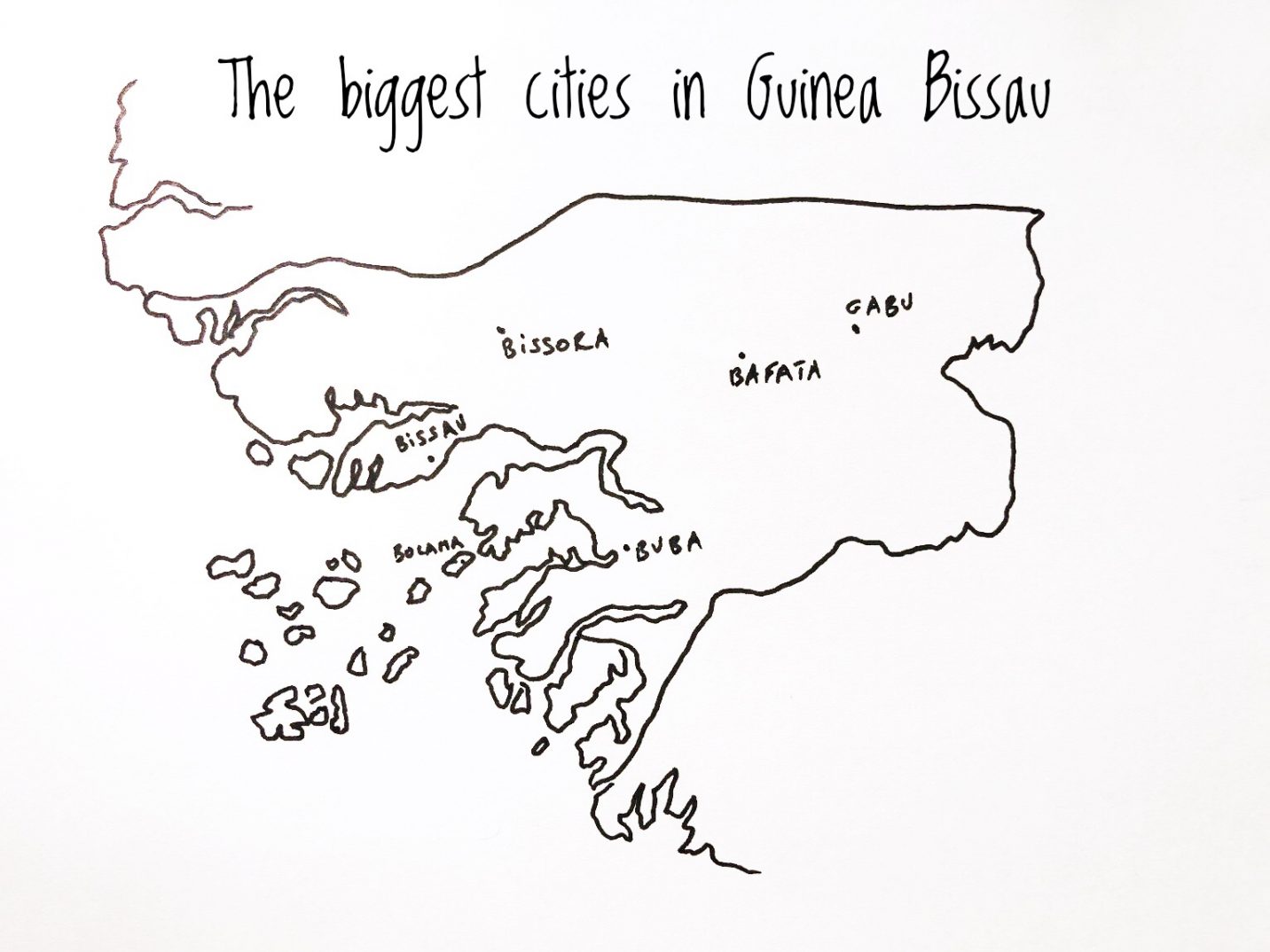Guinea-Bissau is a small state in West Africa that covers an area of 36,120 square kilometres. This state has the peculiarity of having one-third of its territory covered by water. Guinea also has one of the largest archipelagos on the continent. The country’s population is 1.65 million.

1. Bissau
The country’s capital is said to have a population of over 450,000. The creation of the city is said to date back to 1687 when the Portuguese created a fortified trading post. Bissau has an area of 77 square kilometres and a population density of about 6,000 inhabitants per square kilometre. Bissau developed around the estuary of the river Geba. The capital city is, therefore, a natural political, economic and cultural centre. It is also a critical military centre of the country. Traces of the civil war are still clearly visible in the city centre of the capital.
2. Bafata, one of the biggest cities of Guinea-Bissau
About 225,510 people are living in Bafata. This city in the centre of the country is famous because it is the birthplace of Amilcar Cabral, one of the most emblematic leaders in the fight against colonialism. It is worth noting that Guinea-Bissau is the only country in Africa to have liberated itself by arms in 1974. This is an essential point for a good understanding of the country’s political situation. As a result, the army occupies a necessary place in the life of the country.
The city’s activity revolves around industry and agriculture. The city is located on an important road that allows you to reach nearby Guinea-Conakry. It should also be noted that the town of Bafata is situated on the left bank of the Rio Geba, which helps to get the capital by the river.
What to do in Bafata?
This city is oriented towards industry and has no real tourist interest. One of the city’s activities is to walk along the river that borders the town. You should also not hesitate to visit the small traditional villages. The old market of Bafata is an exciting place to discover.
3. Gabu
This city in the east of the country is one of the largest cities in Guinea-Bissau. In Gabu, the leading ethnic group is the Falus. The majority of the population is Muslim. Gabu is a very ancient settlement, the empire of Kaabu which lasted from the 13th to the 19th century.
4. Bissora
This city in the west of the country is located a few dozen kilometres from the capital in the region of Oio.
5. Bolama
This large city of Guinea-Bissau has the peculiarity of being on an island of the same name. The population is estimated to be around 20,000 inhabitants. The Portuguese colonizers would have created this city in 1871. This city was the capital of the country until 1941. Indeed, the need for water was becoming more and more important on this Atlantic island. It is for this reason that Bolama had to give way to the city of Bissau.
6. Cacheu
The population of this large city in Guinea-Bissau is estimated at around ten thousand inhabitants. Cacheu is about 100 km from the capital.
What to do in Cacheu?
This city was historically on the Slave Route. After visiting the memorial, it is essential to discover the town and the local crafts.
On the nature side, it is possible to venture into the Cacheu Mangrove Natural Park. This consists of a boat trip to São Domingos. This park covers more than 88,000 hectares and takes its name from the river that runs through the area. It is home to Nile crocodiles, hippopotamuses and many species of migratory birds. There is also a species of the manatee as well as humpback and bottlenose dolphins and green monkeys.
7. Bubaque
This island town is also located on one of the Bijagos archipelagoes. This city is about fifty kilometres from the capital.
What to do in Bubaque?
This city in the west of Guinea-Bissau is a relatively confidential destination. Nevertheless, the islands off the coast of Guinea-Bissau are exceptional. They have moreover been classified as a World Heritage Site for their fauna and flora. A unique biotope that we must try to preserve at all costs. Also worth seeing is the former administrator’s house, a dilapidated building that was until recently an administrative building.
Guinea-Bissau, a forbidden trip?
This state was a country that historically produced cashew nuts. Then with time, this country, unfortunately, became a stopover on the drug route. Cocaine would therefore transit through this country before leaving for Europe. As a result, there is no real rule of law and to some extent, chaos reigns.
Guinea-Bissau is a country with significant mineral wealth. There are large phosphate reserves in the north of the country. The oil reserves also whet the appetite of two large African countries such as Angola and Nigeria. Until the country is pacified, there will be no exploitation of oil in the waters of the Gulf of Guinea.
The country, which is indebted to the tune of four times its GDP, is experiencing other difficulties such as the tension between the two main ethnic groups.